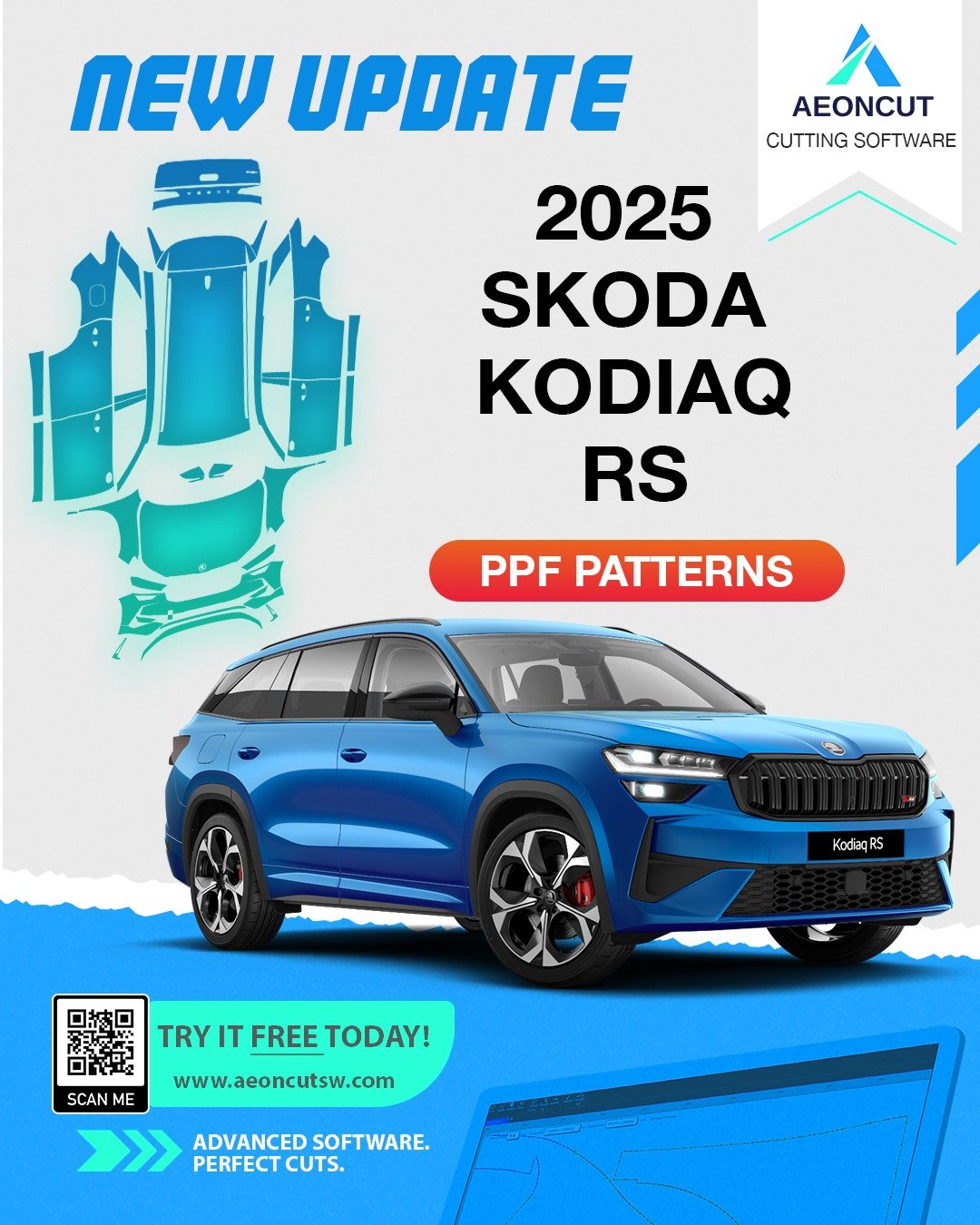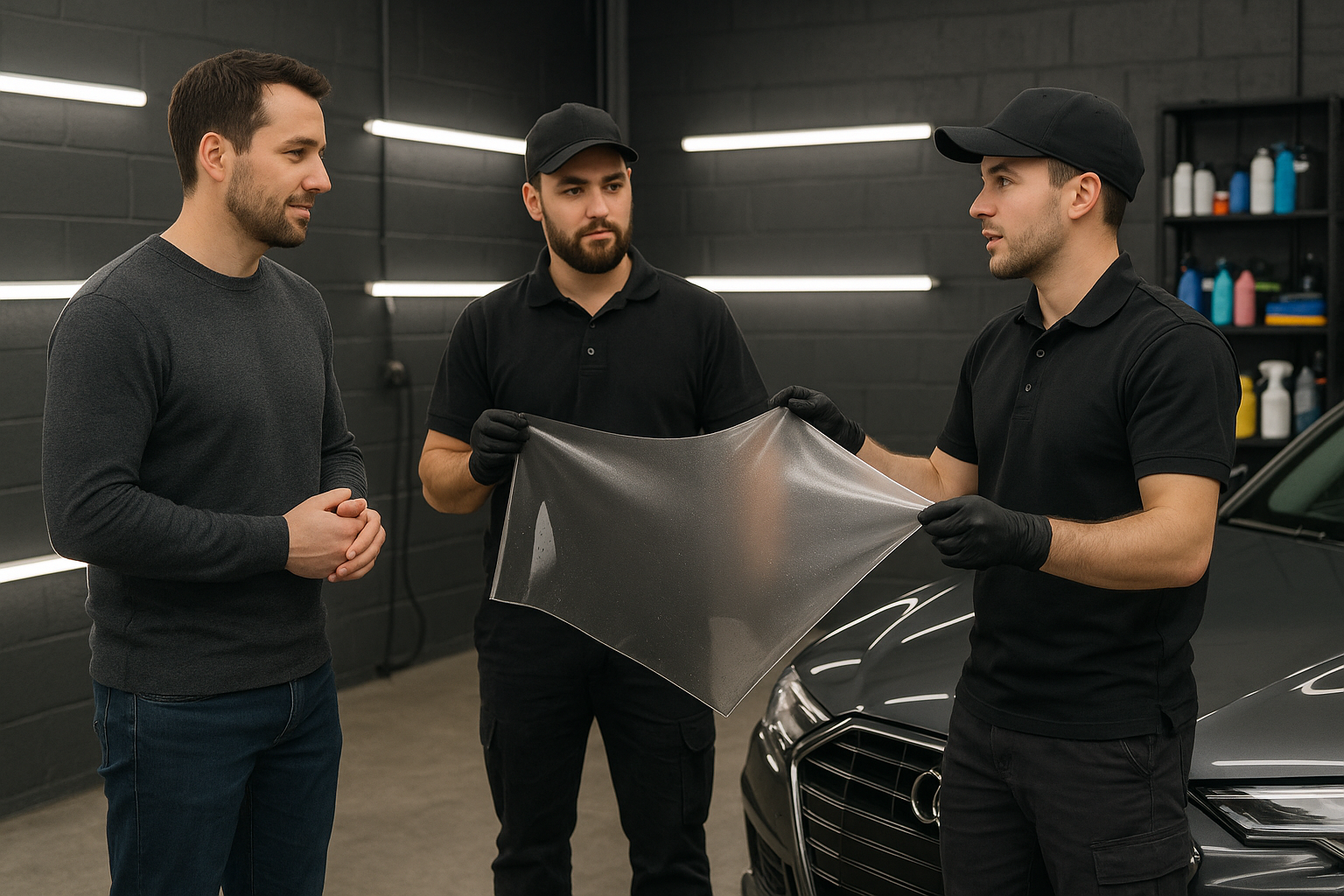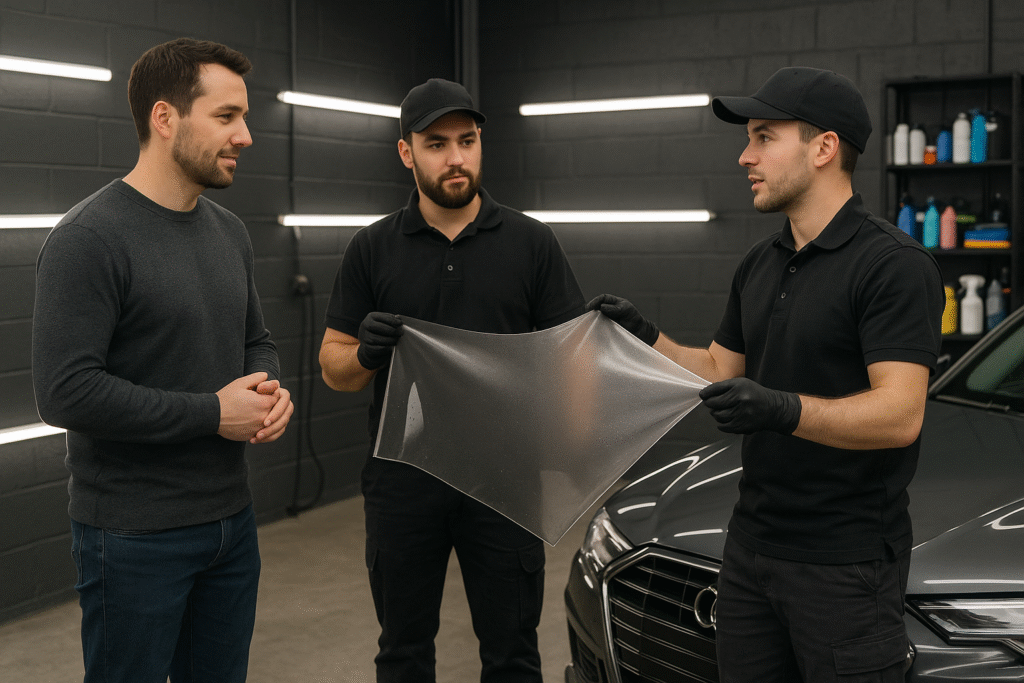

Paint protection film is no longer just for supercars or showrooms. Demand has surged and vehicles with PPF are now 75% less likely to suffer paint damage over five years. Most people still think of this clear film as a luxury extra. The reality is that in 2025, skipping PPF could cost customers far more than they expect.
Table of Contents
- Why Ppf Car Protection Matters In 2025
- Key Steps For Flawless Ppf Installation
- Comparing Ppf Film Types And Suppliers
- Boosting Business With Ppf Car Protection
Quick Summary
| Takeaway | Explanation |
|---|---|
| PPF is essential for vehicle value | Installing paint protection film significantly reduces long-term repair costs and preserves resale value by preventing paint damage. |
| Advanced technologies enhance PPF effectiveness | Modern PPF features self-healing capabilities and superior UV resistance, providing comprehensive protection beyond basic applications. |
| Preparation is crucial for flawless installation | Thorough surface cleaning and preparation are vital to ensure proper adhesion and prevent imperfections during PPF application. |
| Market growth offers business opportunities | The growing demand for PPF presents automotive professionals with a chance to expand services and increase revenue significantly. |
| Education and marketing drive client trust | Educating clients about the benefits of PPF and showcasing successful installations can enhance trust and encourage service uptake. |
Why PPF Car Protection Matters in 2025
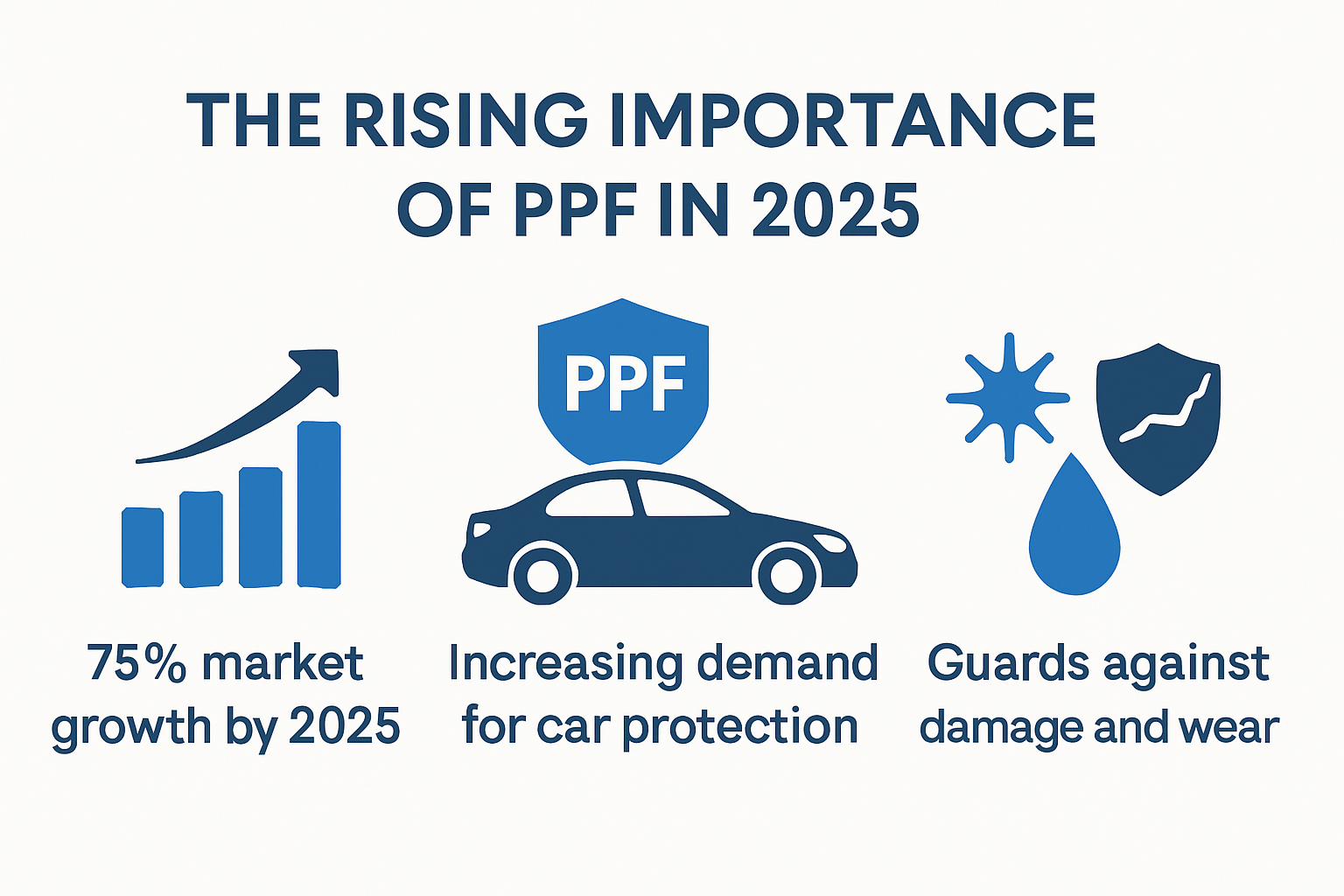
The automotive protection landscape is rapidly evolving, and paint protection film (PPF) has become a critical investment for vehicle owners and professionals in 2025. Understanding the transformative impact of PPF requires a comprehensive look at its role in preserving vehicle aesthetics and value.
The Economic Imperative of Vehicle Protection
Vehicle maintenance has become more sophisticated, with professionals recognizing that proactive protection significantly reduces long-term repair costs. Research from GWD Motors reveals that vehicles with PPF are 75% less likely to suffer paint damage over a five-year period. This statistic underscores the economic rationale for PPF installation.
Paint damage can dramatically decrease a vehicle’s resale value. Minor scratches, stone chips, and environmental contaminants cause progressive deterioration that traditional waxing cannot prevent. Professional installers understand that PPF offers a robust barrier against these common threats, effectively preserving the vehicle’s original finish.
Advanced Protection Technologies in 2025
According to Forbes, paint protection film serves as a critical barrier against road debris and sun damage. Modern PPF technologies have evolved beyond simple protective layers. Contemporary films now incorporate self-healing properties, advanced UV resistance, and microscopic protective characteristics that were previously unimaginable.
The technical specifications of PPF have dramatically improved. Thermoplastic urethane films now offer unprecedented clarity, durability, and protection. Professional installers recognize that these advancements mean more than just surface-level protection – they represent a comprehensive approach to vehicle preservation.
Environmental and Long-Term Vehicle Preservation
Wikipedia highlights that PPF is now OEM approved by virtually all car manufacturers, indicating its critical role in modern automotive care. This recognition stems from the film’s ability to protect against multiple environmental challenges: UV radiation, chemical stains, rock chips, and minor abrasions.
For professional installers, PPF represents more than a service – it’s a commitment to vehicle longevity. The film acts as a sacrificial layer, absorbing potential damage that would otherwise directly impact the vehicle’s original paint. This approach not only maintains aesthetic appeal but also protects the substantial investment clients have made in their vehicles.
Professionals looking to read more about advanced PPF protection techniques will find that the industry has transformed from a simple protective measure to a sophisticated preservation strategy. In 2025, PPF is no longer an optional upgrade but a fundamental aspect of comprehensive vehicle maintenance.
The message is clear: PPF car protection matters more in 2025 than ever before. For vehicle owners and automotive professionals, it represents a smart, forward-thinking approach to preserving automotive investments.
Key Steps for Flawless PPF Installation
Successful paint protection film (PPF) installation requires precision, expertise, and a methodical approach. Professional installers must master a comprehensive process that transforms raw film into a seamless protective layer for vehicles.
Surface Preparation and Cleaning
According to professional detailing experts, preparation is the foundation of a flawless PPF installation. The process begins with meticulous surface cleaning that goes far beyond a standard car wash. Professionals use a pH-balanced car shampoo to remove surface dirt, followed by a clay bar treatment to eliminate embedded contaminants.
The critical next step involves using isopropyl alcohol to remove any remaining oils, waxes, and microscopic residues. This deep cleaning ensures maximum adhesion and prevents future imperfections. Professional installers know that even the smallest particle can create a visible flaw in the final installation.
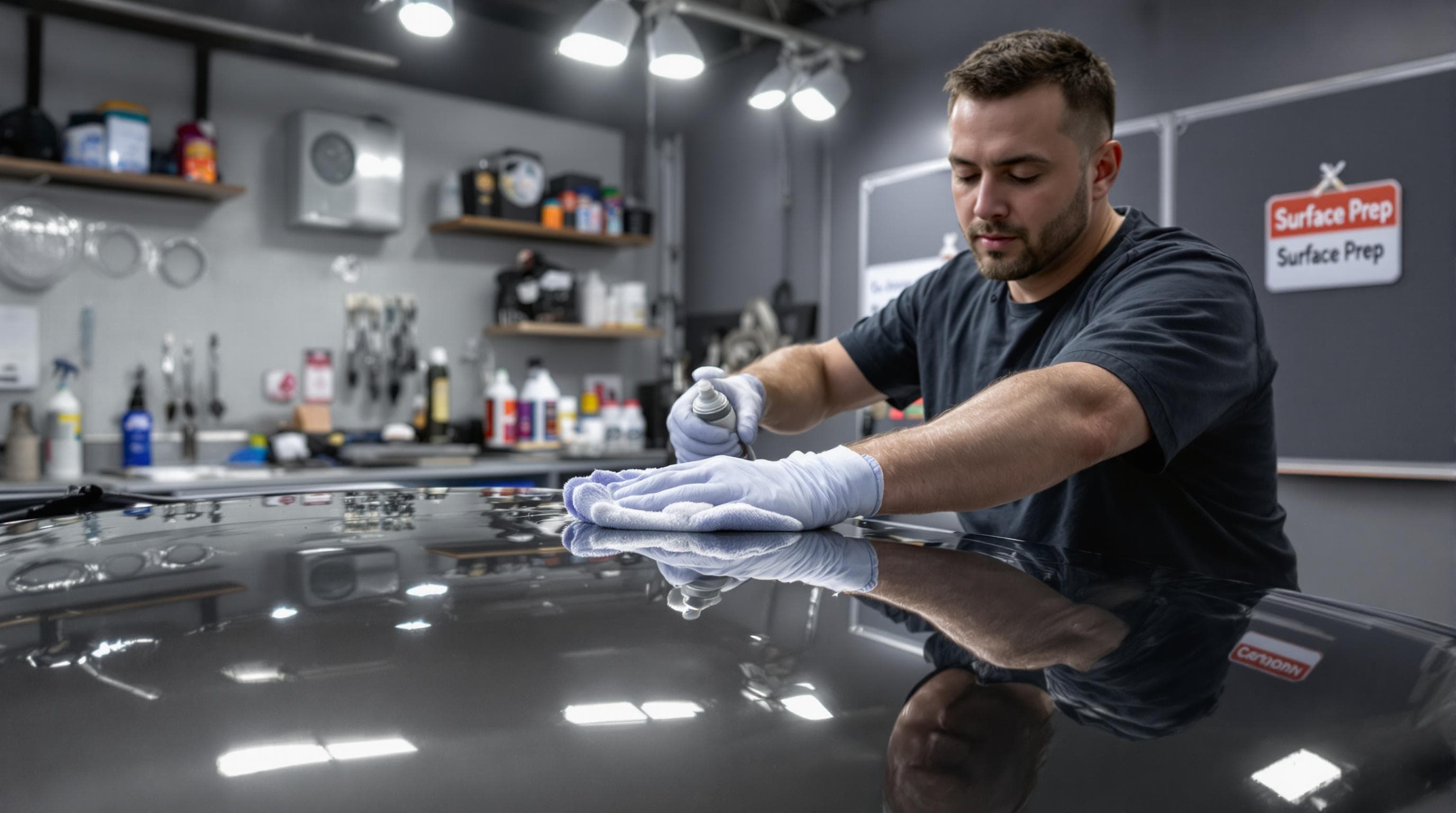
Precise Film Cutting and Application
Wikipedia notes that PPF is typically applied to high-impact areas like the hood, front fenders, bumpers, and side mirrors. Professional installation guides outline a systematic approach to film application that requires exceptional skill and attention to detail.
The process involves several critical steps:
- Accurately measuring and cutting the film to match vehicle contours
- Activating the adhesive with a specialized slip solution
- Carefully positioning the film to avoid air bubbles
- Using professional-grade squeegees to remove excess solution and air pockets
- Applying controlled heat to help the film conform to complex surface shapes
Final Inspection and Quality Assurance
The final stage of PPF installation is perhaps the most crucial. Professionals learn more about advanced PPF protection techniques to ensure a perfect finish. This involves:
- Carefully inspecting every inch of the applied film
- Trimming excess material with precision
- Checking for any remaining air bubbles or imperfections
- Ensuring complete edge adhesion and smooth transitions
Professional installers understand that their reputation depends on delivering a flawless finish. Each installation is a testament to their skill, attention to detail, and commitment to protecting the vehicle’s appearance and value. The difference between an average and an exceptional PPF installation lies in these meticulous steps.
Mastering PPF installation is an art form that combines technical skill, patience, and professional-grade techniques. For automotive professionals, it represents the pinnacle of vehicle protection and aesthetic preservation.
Here is a step-by-step summary of the professional PPF installation process, from preparation to finishing:
| Step | Description |
|---|---|
| Surface Preparation | Meticulous washing, clay bar treatment, and alcohol wipe to ensure cleanliness |
| Film Measuring and Cutting | Accurately measure and cut the film for vehicle contours |
| Adhesive Activation | Spray slip solution to activate film adhesive |
| Film Application | Position film carefully, avoiding bubbles |
| Squeegee and Heat Application | Use squeegee and heat for conformity and bubble removal |
| Final Inspection & Edge Sealing | Trim excess, inspect for flaws, ensure edge adhesion |
Comparing PPF Film Types and Suppliers
Navigating the complex world of paint protection film (PPF) requires professional installers to understand the nuanced differences between film types and suppliers. Each option presents unique characteristics that can significantly impact vehicle protection and aesthetic outcomes.
Film Composition and Performance Characteristics
Wikipedia highlights that PPF is a thermoplastic urethane film designed to protect vehicle surfaces from various environmental challenges. Garware High Tech Films explains that traditional polyurethane films offer excellent protection against scratches and stains, though they may yellow over time.
Modern PPF technologies present several distinct variations:
- Clear Films: Provide invisible protection while maintaining original paint appearance
- Matte Finish Films: Offer a contemporary, subdued aesthetic
- Gloss Films: Enhance paint depth and shine
- Self-Healing Films: Automatically repair minor scratches when exposed to heat
To help compare the main PPF film types and their key characteristics, see the table below:
| Film Type | Finish Appearance | Key Benefit | Notes |
|---|---|---|---|
| Clear Film | Transparent/Gloss | Invisible protection | Maintains original paint look |
| Matte Finish Film | Matte | Modern, subdued look | Changes vehicle’s paint appearance |
| Gloss Film | High Gloss | Enhanced shine & depth | Intensifies paint’s visual effect |
| Self-Healing Film | Gloss/Clear/Matte | Repairs minor scratches with heat | Advanced technology, premium option |
Supplier Selection and Quality Considerations
Professional installers must critically evaluate potential PPF suppliers based on multiple criteria. Film quality represents the primary consideration, with top-tier suppliers offering:
- Consistent film thickness
- Superior adhesive properties
- Enhanced UV resistance
- Warranty coverage
Our comprehensive guide on advanced PPF protection techniques recommends assessing suppliers through rigorous testing and professional network recommendations.
Advanced Film Technology and Future Trends
Our PPF experts note emerging trends in film technology that go beyond traditional protection. Innovative films now incorporate nanotechnology, offering unprecedented levels of durability and self-repair capabilities.
Key technological advancements include:
- Nano-ceramic infused films
- Enhanced thermal adaptability
- Improved chemical resistance
- Microscopic self-healing mechanisms
Professional installers must stay informed about these evolving technologies to provide cutting-edge protection solutions. The PPF market continues to transform, with manufacturers developing increasingly sophisticated films that offer superior protection and aesthetic enhancement.
Ultimately, selecting the right PPF film and supplier requires comprehensive knowledge, ongoing research, and a commitment to understanding emerging technologies. Professionals who invest time in understanding these nuanced differences will consistently deliver superior vehicle protection solutions.
Boosting Business with PPF Car Protection
The paint protection film (PPF) market represents a significant opportunity for automotive professionals seeking to expand their service offerings and increase revenue streams. Understanding the market dynamics and strategic approaches can transform PPF from a niche service to a core business driver.
Market Growth and Economic Potential
According to IMARC Group, the U.S. paint protection film market is projected to grow from USD 90.0 million in 2024 to USD 161.0 million by 2033, with a compelling CAGR of 5.99%. Fortune Business Insights further confirms this trend, highlighting the automotive segment as holding the largest market share.
This substantial growth trajectory presents unprecedented opportunities for professional installers. The increasing ownership of luxury vehicles and heightened awareness about vehicle aesthetics are driving market expansion. Professional installers can capitalize on this trend by positioning PPF as a premium, value-added service.
To illustrate the growth and potential of the PPF market through the decade, refer to this table summarising key US market figures:
| Year | US PPF Market Value (USD Million) | Projected CAGR |
|---|---|---|
| 2024 | 90.0 | 5.99% |
| 2030 | 158.21 | — |
| 2033 | 161.0 | 5.99% |
Strategic Service Diversification
Successful automotive businesses recognize PPF as more than just an additional service – it’s a strategic differentiator. Our comprehensive guide on advanced PPF protection techniques emphasizes the importance of developing a comprehensive PPF strategy.
Key strategies for business growth include:
- Offering tiered PPF packages
- Developing specialized installation expertise
- Creating transparent pricing models
- Investing in continuous training
- Building strong supplier relationships
Marketing and Client Education
Grand View Research predicts the PPF market will reach USD 158.21 million by 2030, driven by increasing demand for vehicle protection solutions. This growth underscores the critical role of effective marketing and client education.
Professional installers should focus on:
- Showcasing before-and-after visual demonstrations
- Highlighting long-term vehicle value preservation
- Explaining technical benefits beyond aesthetic improvements
- Leveraging social media and digital marketing
- Creating client testimonial programs
The PPF market offers more than financial opportunities – it represents a chance to elevate service quality and customer trust. By understanding market trends, investing in expertise, and developing strategic marketing approaches, automotive professionals can transform PPF from a peripheral service to a core business driver.
The future of automotive protection is clear: those who invest in PPF technology and expertise will be best positioned to meet growing client demands and capitalize on this expanding market segment.
Frequently Asked Questions
What is paint protection film (PPF)?
PPF is a clear thermoplastic urethane film applied to vehicles to protect the paint from scratches, stains, and other environmental damage.
Why is PPF important for vehicle owners in 2025?
In 2025, PPF is essential as it significantly reduces the likelihood of paint damage over five years, preserving the vehicle’s aesthetic and resale value.
What are the key steps for a flawless PPF installation?
The key steps include thorough surface preparation and cleaning, precise film cutting and application, followed by a detailed final inspection to ensure quality.
How can automotive professionals benefit from offering PPF services?
Offering PPF services allows automotive professionals to tap into a growing market, enhance their service offerings, and increase revenue, as demand for vehicle protection continues to rise.
Transform Your PPF Installations in 2025 with Precision Pre-Cut Solutions
Struggling with time-consuming manual cutting or wasted material during PPF installations? In a market where flawless results and efficiency are absolutely vital, you need practical solutions that match the advanced expectations outlined in this essential guide. Professional installers today face intense pressure to deliver perfect finishes, minimise errors, and stand out through both speed and accuracy. The real edge lies in having access to reliable, comprehensive PPF precut pattern resources that eliminate guesswork while supporting every vehicle model and every demand for detail.
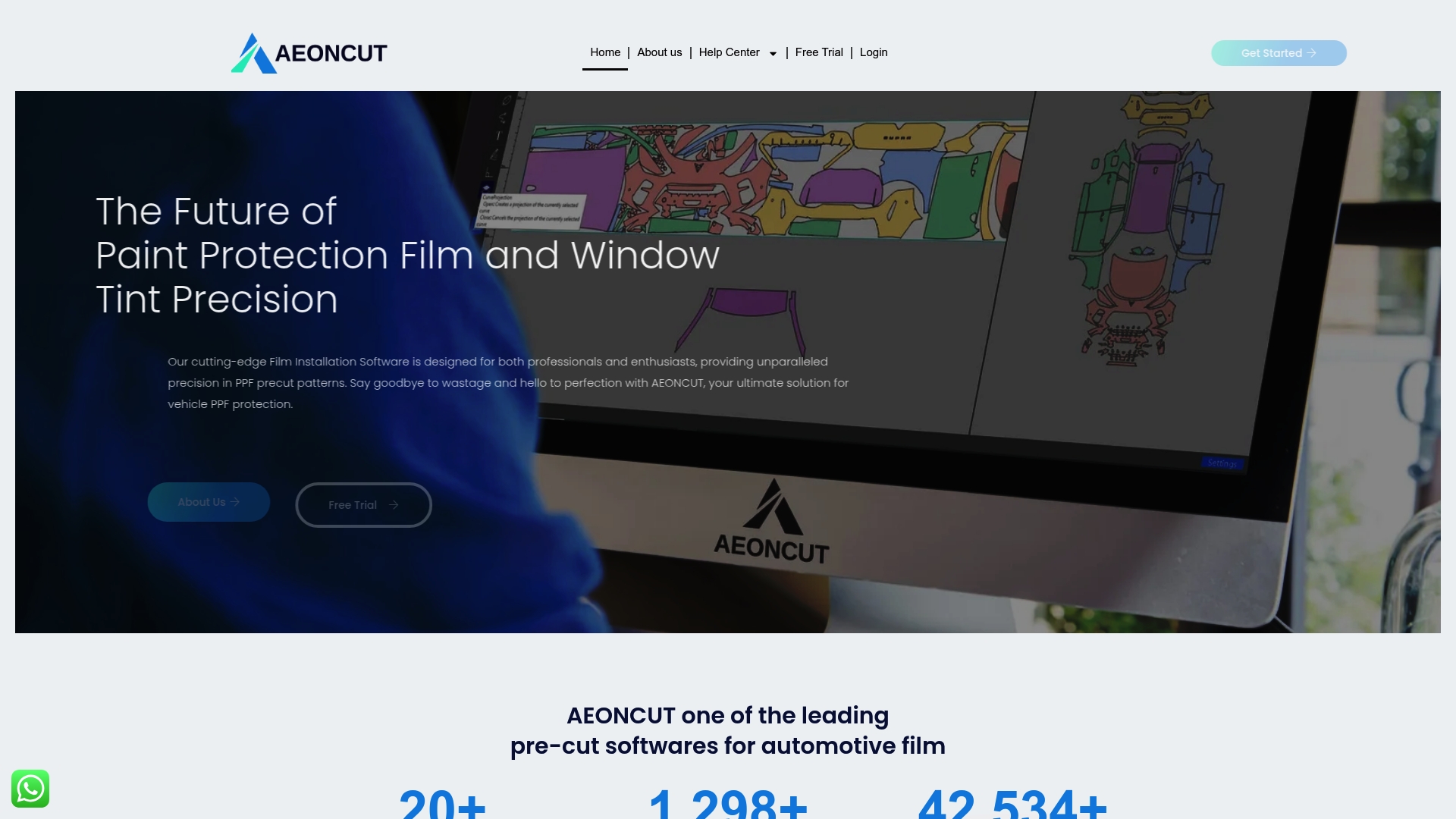
Take your PPF business to the next level in 2025. With AEONCUT PPF Pre-cut Cutting software, you can access an extensive library of pre-cut patterns, real-time updates and powerful AI-driven efficiency tools. Visit https://aeoncutsw.com to see how seamless pattern integration can help you meet client expectations and secure your place as a leader in vehicle protection. Do not let old habits limit your growth—discover a smarter, quicker way to impress every customer today.
Recommended
- How Does PPF Work? Guide for Car Care Pros 2025 – AEONCUT PPF Pre-cut Cutting software
- Top Paint Protection Film Benefits for Auto Professionals 2025 – AEONCUT PPF Pre-cut Cutting software
- PPF for Motorcycles: 2025 Guide for Installers & Detailers – AEONCUT PPF Pre-cut Cutting software
- Understanding Paint Protection Film Lifespan: Insights for Professionals 2025 – AEONCUT PPF Pre-cut Cutting software


